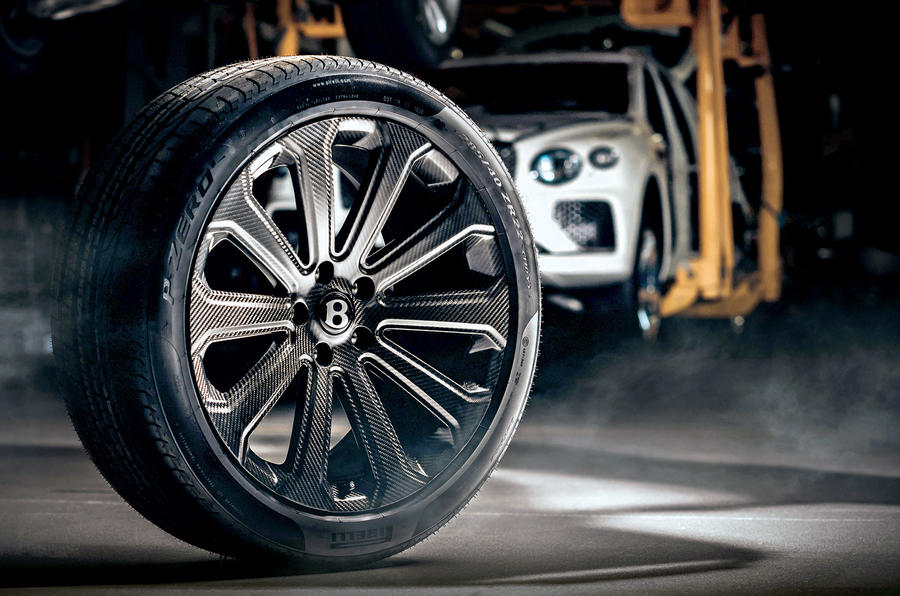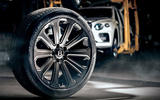Shaving significant amounts of unsprung weight from a car has a real effect on its handling, roadholding, braking performance, steering and agility. Unsprung weight means just that: the weight in a car that isn’t supported by the suspension springs. A large chunk of that on any car is the wheels and tyres, especially if they’re larger sizes.
Bentley’s bespoke division, Mulliner, has developed a carbonfibre Bentley Bentayga wheel that, at 22in in diameter, is said to be the largest composite wheel anywhere. The weight saving is a substantial 6kg per wheel – a reduction from 17.4kg for the aluminium alloy original to 11.4kg. Making large-diameter carbonfibre wheels for big, high-performance cars is no mean feat, and Bentley’s engineers have been working on the project together with its supplier, Italian specialist Bucci Composites, since 2015.
Bucci holds its own patent on the manufacture of carbonfibre wheels and has the necessary know-how to make them using high-pressure resin transfer moulding (HP-RTM). The carbonfibre cloth is cut and laid up in a hefty steel mould, which is closed before the resin is injected at high pressure.
The direction of the weave in the various layers of carbonfibre makes a significant contribution to how the wheels hold their shape under heavy braking and cornering. For example, a conventional alloy wheel can deflect (bend) under hard cornering to the extent that negative camber is reduced by as much as 1deg – a lot in camber terms. The carbonfibre wheel is so rigid that it doesn’t deflect at all, and that reflects in a good way on the grip, contact-patch stability and wear of the tyre with which it is shod.

The biggest challenge came in dealing with heat soak from the brakes. Wheels are essentially large heat sinks, absorbing the immense heat generated under heavy braking. At the centre of the wheel, a forged aluminium hub moulded into the carbonfibre absorbs and dissipates some of the heat, but a lot is also transferred to the carbonfibre spokes. The way the carbonfibre is laid up in the mould and the directions of the weave contribute to dissipating the heat into the airflow.











Join the debate
Add your comment
A massive big ugly SUV? Come on Autocar, it's just an other to bling on the bling option list.
I wonder what Leonard John Kensell Setright would have made of it?
Yes because shedding 24kg from a 3tonne monster will make all the diference on the school run.